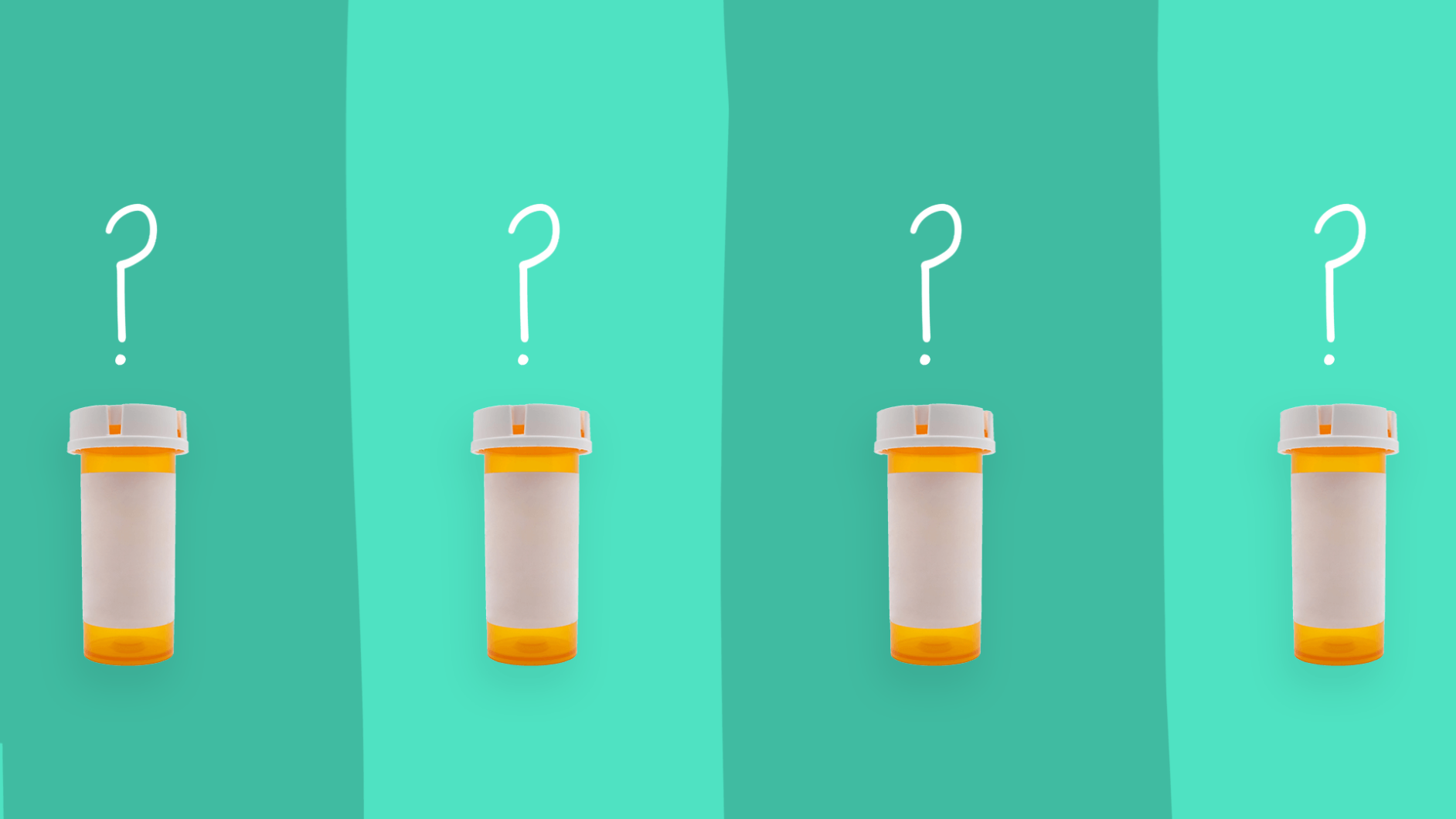Key takeaways
Look-alike sound-alike (LASA) drugs, which may have similar packaging, names, or spellings, pose a significant risk for medication errors due to their similarities.
The Food and Drug Administration (FDA) regulates medication names, colors, and shapes to prevent confusion, but the vast number of medications makes this challenging.
Certain LASA drugs are considered high alert medications because mistakes in their use can lead to serious health risks, including those affecting blood clotting, respiratory issues from opiates, or drastic blood sugar changes from insulin.
Preventing LASA errors involves staying informed about your medications, storing them in their original bottles, marking the bottles for easier identification, and regularly consulting with healthcare providers and pharmacists.
You open up your medicine cabinet and see a row of pill bottles. A lot of the Rx names are hard to pronounce. Some of them even look alike. Is hydralazine the medication you take for itching, or is it hydroxyzine?
The thing is, there are more than 20,000 prescription medications on the market, so there are bound to be plenty of medications that look or sound like each other. They’re called look-alike sound-alike drugs, or LASA drugs for short. They can be concerning for you, and for your pharmacist or healthcare providers if they are mixed up. Here’s what is important about LASA drugs, and how to protect yourself.
What are look-alike sound-alike drugs?
LASA drugs are medications that look or sound similar to each other, either by their generic name, or brand name. They might have similar packaging, similar-sounding names, or similar spellings.
For example, Prozac sounds a lot like Prilosec when said out loud. While Prozac is an antidepressant, Prilosec is an over-the-counter heartburn medication.
“Look-alike and sound-alike medications are a much bigger problem than the public realizes,” says Spencer Kroll, MD, Ph.D., a board-certified internal medicine specialist at The Kroll Medical Group. “The Food and Drug Administration, in addition to monitoring for safety and efficacy of medications, is supposed to regulate names, colors, and shapes of medications to avoid confusion. The sheer volume of medications has precluded this from effectively happening.”
Wondering if your medication is commonly confused? The Institute for Safe Medication Practices has a complete list of all LASA drugs that is updated regularly.
Why are some LASA drugs high alert medications?
If you mistook Prilosec for Prozac for one dose, it’s probably not going to cause much harm. Similarly, if you weren’t aware that the cold medicine Nyquil has Tylenol in it, and took a separate dose of Tylenol along with it once, it’s probably all right. However, it means you took unnecessary medication under the assumption it was a different product based on the brand name, says Lara Ellinger, Pharm.D., medication safety and drug information pharmacist at Northwestern Memorial Hospital.
And some LASA drugs can result in real harm. There’s not a general consensus of which particular medications are more high alert than others, Dr. Ellinger explains. But certain types of medications carry a bigger risk if a mistake is made. Drugs that affect the blood’s ability to clot, such as warfarin, can be dangerous in too high or too low of a dose. Opiates, prescribed for pain, can cause respiratory issues if taken in excess. Similar looking insulin pens such as Humalog and Levemir can cause blood sugar to drop drastically if you inject the ‘right’ dose of the wrong one.
How do you prevent LASA errors?
It’s impossible for pharmacists to know all the different medications. They need to rely on certain safety measures to make sure they don’t confuse one LASA drug for another. Many errors will be caught before they even get to the consumer, but even at home, look-alike sound-alike drugs can cause issues. So how can you prevent these mistakes after you pick up your prescription?
1. Stay in touch with your healthcare provider
Dr. Kroll tries to make things clear for his patients by choosing medications with different first letters or different-sounding names to avoid confusion. You can request that your provider do this as well. Make sure that you sit down with your provider at least yearly (and when changes are made) to go over your complete medication list so both parties understand what’s being taken—and clear up any confusion.
2. Know the reasons for your medications
One study found that simply having providers put the reason for the medication on the prescription label, can prompt patients to recognize that reason and make sure they’re taking the correct medication. It’s important to know what medications are for, and why they’re being taken, explains Dr. Ellinger. When picking up prescriptions from the pharmacy, be sure they’re the correct ones by checking that the indication matches what you expect.
3. Store medications appropriately
Dr. Ellinger recommends people to store medications in the original bottles or packages. Don’t combine pills into one bottle. If you’ve already done so, ask your pharmacist if you’re unsure about which medications are which.
4. Mark prescription bottles
Sometimes, even with the best intentions, it can still be hard to differentiate between medications. Dr. Ellinger explains that by placing a mark on the bottle (not the cap), you can tell one medication apart from another. Even using different colored marks on packaging can help keep track of them.
You may notice that if your pill looks different upon a refill, it’s likely just a different manufacturer making the drug, but it’s always best to check with the pharmacist just in case. If you ever need clarification about any of your medications, don’t hesitate to call your provider or pharmacist, especially when it comes to look-alike sound-alike medications.




